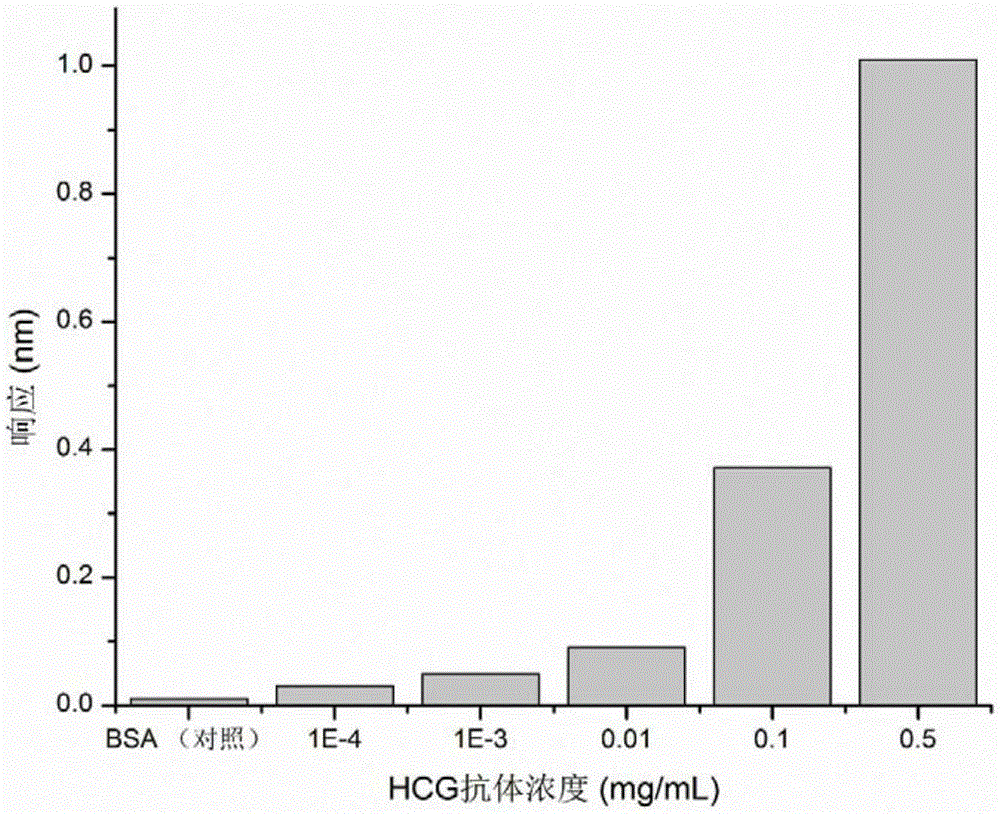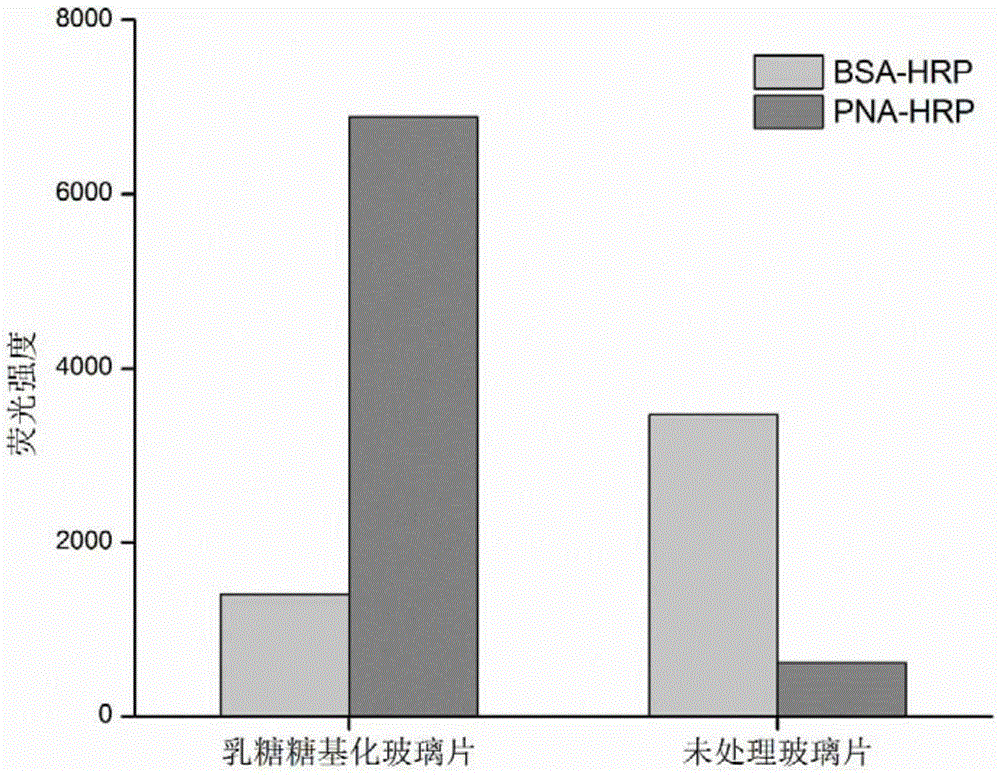Method for biological functionalization of silicon-based material surface
A biofunctionalized, silicon-based material technology, applied in the treatment of dyed organosilicon compounds, fibrous fillers, etc., can solve the problems of inactivation of biomolecules, high reaction specificity, and low coupling rate of biomolecules. Strong operability, wide applicability and high reproducibility
- Summary
- Abstract
- Description
- Claims
- Application Information
AI Technical Summary
Problems solved by technology
Method used
Image
Examples
Embodiment approach
[0021] In another specific embodiment, the method includes the following steps:
[0022] (1) Surface modification of hydroxylated silicon-based materials with mercapto / aminosilane coupling agents;
[0023] (2) Divinyl sulfone is mixed with biomolecules and reacted at 0-40°C for 2-16 hours;
[0024] (3) Put the surface-modified silicon-based material in the mixed solution of step (2), keep it at 0-40° C. for 1-16 hours, take it out, and wash it with water and ethanol.
[0025] In any embodiment of the above-mentioned method for biofunctionalizing the surface of silicon-based materials of the present invention, in the reaction in which the silicon-based material reaction unit participates, the reaction temperature is 0-40°C, preferably 20-30°C; the reaction time is 1-16°C. hours, preferably 8-12 hours; in the reaction in which the biomolecular reaction unit participates, the reaction temperature is 0-40°C, preferably 20-30°C; the reaction time is 1-16 hours, preferably 8-12 hou...
Embodiment 1
[0033] Example 1: Preparation and performance testing of HCG functionalized optical fiber
[0034] Optical fiber (optical fiber) is a common silicon-based material, which is an ideal optical material due to the very low loss of light transmission in it. On the other hand, optical fiber has good biocompatibility, low price, and wide commercial sources, making it a widely used biosensing and medical detection element. In this embodiment, the biological molecule HCG is immobilized on the end face of the optical fiber to realize its biological function and be used for the detection of HCG antibody.
[0035] A fiber optic probe modified with an aminosilane coupling agent (DipandRead TMAminopropylsilane (APS) Biosensors, Fortebio, MenloPark, CA, USA) was immersed in an aqueous solution of divinyl sulfone (DVS) (10%, v / v, pH9.5, containing 10% acetone to aid dissolution), and activated at room temperature for 12 hours Then take it out, wash it with deionized water for 3 times, and ...
Embodiment 2
[0037] Example 2: Preparation and performance test of lactose-based functionalized glass sheet
[0038] Ultrasonic clean the glass slices twice with water and ethanol respectively, and place the cleaned glass slices in piranha lotion (sulfuric acid-hydrogen peroxide solution, concentrated sulfuric acid:hydrogen peroxide=3:1, v / v, note: piranha lotion is Organic matter is highly corrosive, please use it with care.) in 90°C for 30 minutes, ultrasonically cleaned with water for 3 times to achieve hydroxylation of the glass sheet. The hydroxylated glass slides were placed in 3-aminopropyltrimethoxysilane (APTES) solution (2%, v / v, the solvent was 95% ethanol, containing 5 drops of acetic acid) at room temperature for 24 hours, and the ethanol was ultrasonically cleaned for 3 The second time, vacuum crosslinking at 120°C for 4 hours to achieve amino modification of glass flakes. Place the amino-modified glass slide in a divinyl sulfone (DVS) solution (10%, v / v, pH9.5, containing 1...
PUM
 Login to View More
Login to View More Abstract
Description
Claims
Application Information
 Login to View More
Login to View More - R&D
- Intellectual Property
- Life Sciences
- Materials
- Tech Scout
- Unparalleled Data Quality
- Higher Quality Content
- 60% Fewer Hallucinations
Browse by: Latest US Patents, China's latest patents, Technical Efficacy Thesaurus, Application Domain, Technology Topic, Popular Technical Reports.
© 2025 PatSnap. All rights reserved.Legal|Privacy policy|Modern Slavery Act Transparency Statement|Sitemap|About US| Contact US: help@patsnap.com



